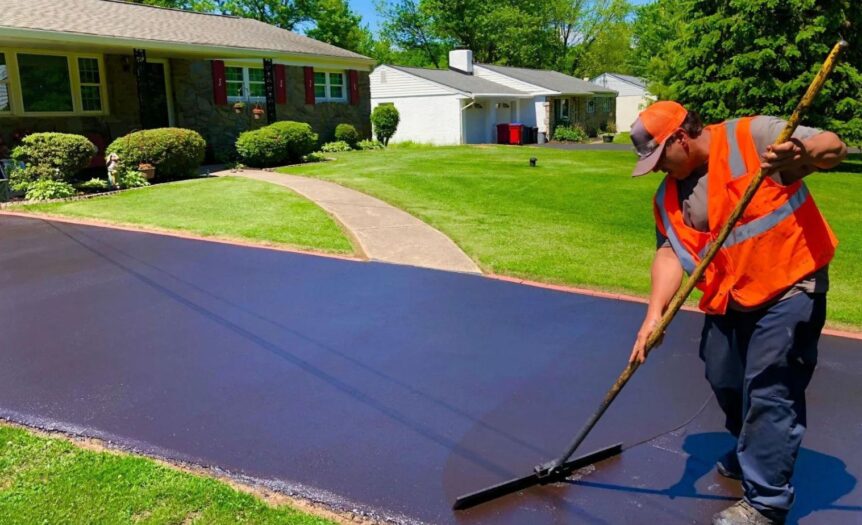When it comes to maintaining and extending the life of asphalt surfaces, sealcoating is a critical process that often goes underappreciated. Whether you’re managing a commercial parking lot, a residential driveway, or any other asphalt pavement, understanding the fundamentals of sealcoating can help you make informed decisions about maintaining your surfaces. In this blog, we’ll cover key aspects of sealcoating that you should know to ensure your asphalt surfaces remain in top condition.
What is Sealcoating?
Sealcoating is the application of a protective layer over asphalt surfaces. This layer is typically made from a mixture of asphalt emulsion, water, and other additives. The primary purpose of sealcoating is to protect the asphalt from the damaging effects of environmental factors such as UV rays, water, and chemicals. By creating a barrier, sealcoating helps prevent oxidation, cracking, and deterioration, thereby extending the life of your pavement.
Benefits of Sealcoating
The benefits of sealcoating are manifold:
Protection from Elements
Sealcoating acts as a shield against the sun’s UV rays, which can cause asphalt to dry out and crack. It also protects against water infiltration, which can lead to erosion and potholes.
Enhanced Appearance
A fresh coat of sealant can restore the original black color of asphalt, giving it a clean, polished look. This is particularly important for commercial properties where first impressions count.
Cost-Effective Maintenance
Regular sealcoating can save you money in the long run by preventing expensive repairs.

Addressing minor issues before they become major problems can significantly reduce maintenance costs.
When to Sealcoat
Timing is crucial for effective sealcoating. Most experts recommend applying sealcoat every 2-3 years, depending on the climate and usage of the asphalt surface. If your pavement shows signs of wear such as fading color, small cracks, or uneven surfaces, it’s time to consider sealcoating. Ideally, sealcoating should be done during warmer months when temperatures are consistently above 50°F (10°C), as this ensures better curing and adhesion.
Preparation is Key
Before applying sealcoat, proper preparation is essential for achieving the best results. The surface must be clean and free of debris, oil, and other contaminants. Any cracks or potholes should be repaired prior to sealcoating. This preparation helps ensure that the sealcoat adheres properly and provides a uniform finish. Professional sealcoating companies often use specialized equipment to clean and prepare the surface effectively.
Choosing the Right Sealcoat
There are several types of sealcoating products available, including coal tar-based and asphalt-based sealers. Each type has its own set of advantages and suitability for different conditions:
Coal Tar-Based Sealers
Known for their durability and resistance to oil and chemicals, coal tar sealers are often used in high-traffic commercial areas.

However, they are becoming less common due to environmental concerns.
Asphalt-Based Sealers
These are more environmentally friendly and often preferred for residential and light commercial applications. They provide good protection and flexibility but may not be as resistant to certain chemicals as coal tar sealers.
Final Words
Sealcoating is a vital aspect of asphalt maintenance that offers significant benefits in terms of protection, appearance, and cost savings. By understanding what sealcoating involves, when to apply it, and the options available, you can make informed decisions that enhance the longevity and performance of your asphalt surfaces. Whether you choose to tackle the project yourself or hire a professional, regular sealcoating will help keep your pavement looking great and functioning effectively for years to come.








